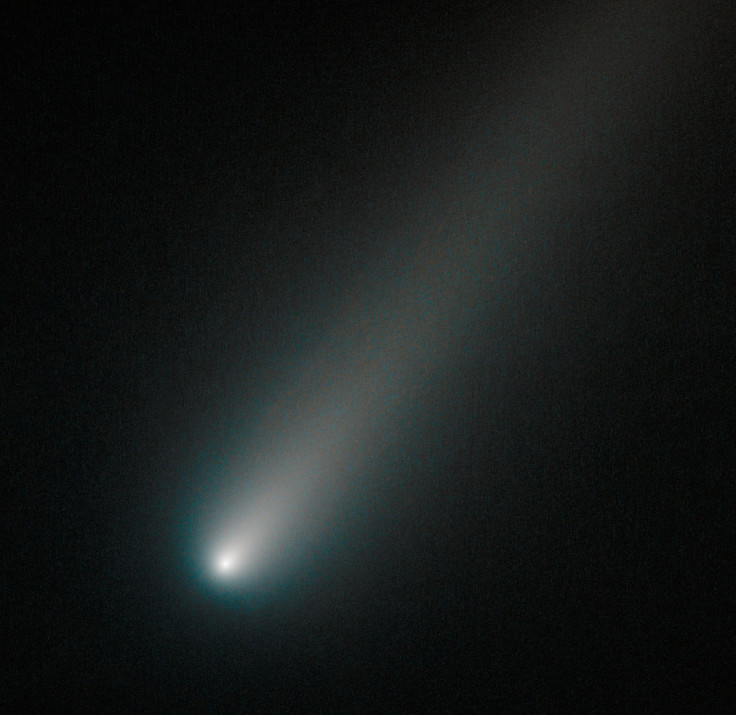Hubble Confirms Comet ISON Is In One Piece, May Not Be Such A Disappointment After All
There are plenty of fears that the “comet of the century” could be a dud but Comet ISON is holding up as it gets closer to the sun. The Hubble Space Telescope captured the comet on Oct. 8 and it appears to be in one piece, a good sign, but there is plenty of peril ahead prior to its November viewing party on Earth.

Hubble’s photo of comet ISON, also known as C/2012 S1, was taken on Oct. 9 and released by the European Space Agency, NASA and the Hubble Heritage Team. According to the Hubble team, the nucleus is still intact but if it had broken up the telescope would have been able to capture visual evidence. Another image of comet ISON burning bright green also indicated an intact nucleus.
Comet ISON most recently passed by Mars and is speeding towards the Sun. Upon its discovery, the comet was dubbed the “comet of the century” as its incredibly close orbit around the Sun would make the comet visible during the day. ISON is expected to be visible on Earth by late November but could disintegrate as it heats up.
Researchers and astronomers won’t know for certain if comet ISON will disintegrate until it gets closer to the Sun, one astronomer believes the comet is well on its way to becoming a dud. Colombian astronomer Ignacio Ferrin says, based on light curve analysis, comet ISON has not brightened as it made its way towards the sun and the expected “kick start” over the summer in brightness did not occur. As the comet heats up, it should appear brighter but that has not been the case with ISON. The comet has been an unusual one from the start and one explanation for these findings may be due layer of material that was vaporized around the time of ISON’s discovery, leading to a false impression of its size.
Comet ISON make its closest pass of the sun’s surface on Nov. 28. As November approaches, expect more updates from researchers and astronomers on the integrity of ISON as it reaches the most dangerous part of its journey through space.
© Copyright IBTimes 2024. All rights reserved.






















